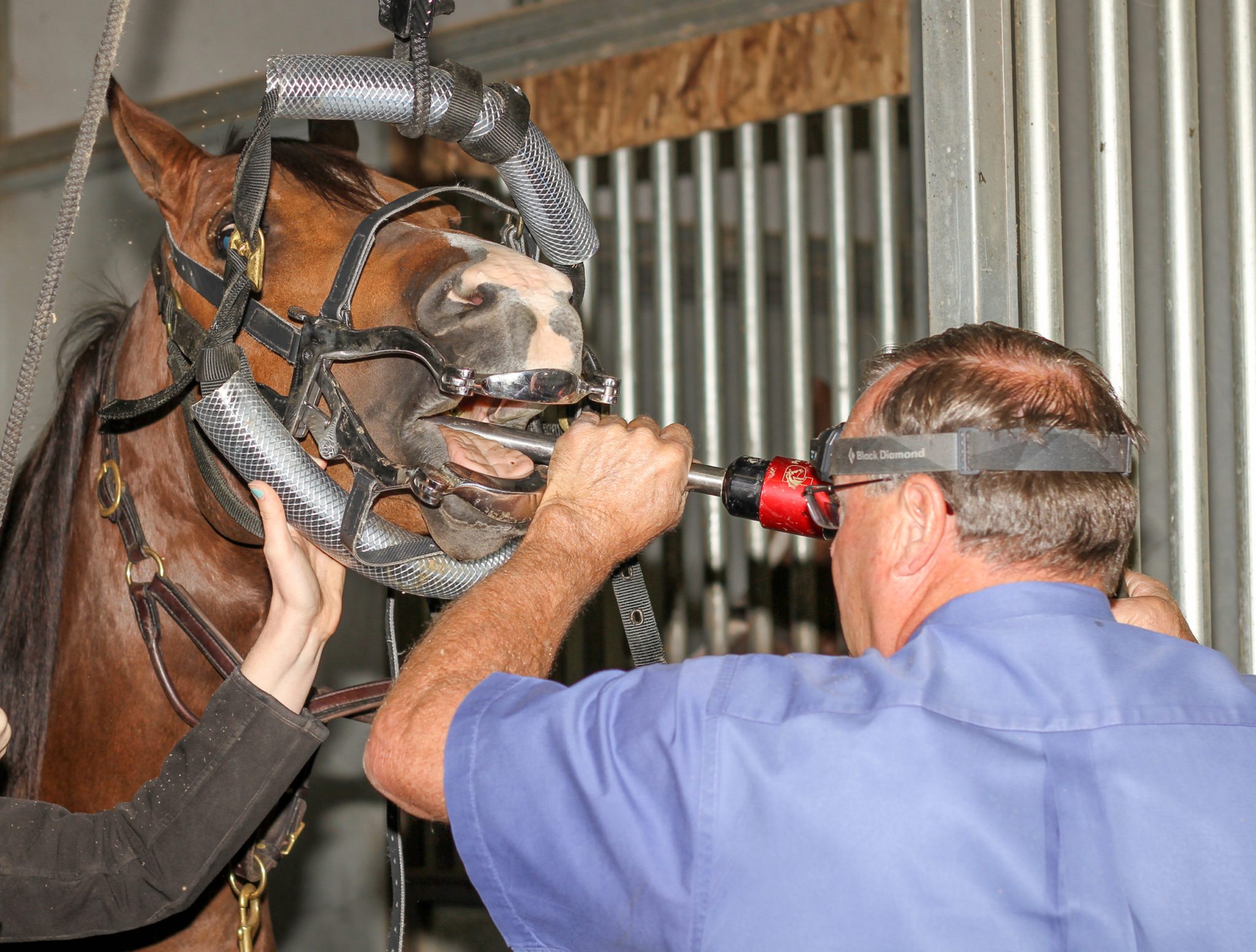Dentistry Care
Equine Dentistry
A horse’s teeth continue to erupt throughout their life. However, despite this ongoing growth, they have only a finite amount of reserve tooth available. As such, lack of routine dental care, abnormal dental conformation and other problems can speed up the wearing process, leading to early tooth loss and other systemic problems (such as colic) from being unable to effectively chew their food.
To ensure all horses have proper excursion (side to side movement of their jaw), our dental exams involve not only “floating” of the sharp points, but also occlusal equilibration. This term, simply put, describes the adjustments made to affect the way the upper and lower teeth fit together during chewing. Maintaining proper occlusion throughout a horse’s life can significantly prolong the longevity of their teeth.
Developments in dentistry have led to the use of the power dentistry, typically a motorized hand drill that has been adapted for teeth floating by positioning a circular spinning carbide blade at the end of a long shaft. The use of power equipment has increased the benefits of equine dentistry by allowing for more precise and effective removal of sharp enamel points and correction of dental abnormalities when performed by a licensed and experienced veterinarian.
We recommend a thorough dental exam annually. Conveniently, a dental can be done wherever your horse is located, as long as there is electricity close to a dark covered area, such as a stall or shelter. Preventative dentistry is a crucial step in helping your horse to live a long, happy, and healthy life.
Many horses do not show signs of discomfort until their oral problems become severe so an annual exam is imperative.
The following signs can be indicative of dental abnormalities:
Difficulty chewing
Taking longer to eat their normal amount of feed
Dropping feed out of their mouth
Leaving ‘quids’ (chewed up pieces of grass or hay) in their stall or paddock
Unwillingness to take the bit, or resistance under saddle
Weight loss
Bad breath
Excessive nasal discharge



